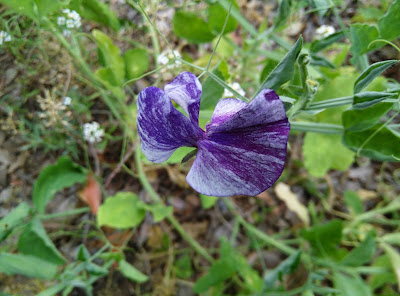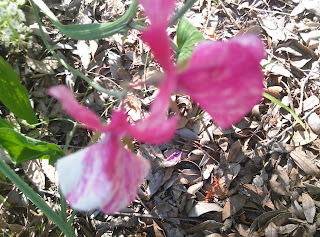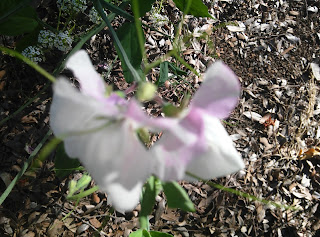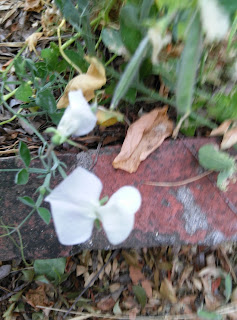The title of this post is an allusion to The Deserted Village, a poem by Oliver Goldsmith (1728-74). I would never have read this poem if it had not been assigned to me
in college. The poem is 430 lines long -- all written in rhymed 'heroic' couplets of iambic pentameter. I do not expect you to read it,* but if you dip into Wikipedia's article on Goldsmith you will get an inkling of how it bemoaned the social and economic consequences of enclosure, a procedure which destroyed the concept of common lands and enabled the amassing of huge estates by wealthy landowners.
Goldsmith was an Irish-born novelist, playwright and poet who, in his day, was part of London's influential inner circle. These included Dr. Samuel Johnson and his biographer James Boswell, the painter Sir Joshua Reynolds, actor David Garrick, musician Charles Burney, and poet laureate Thomas Warton. In other words, Goldsmith became what we would now call a cultural icon, much as Marshall McLuhan became in the 1960s and 1970s in the U.S. and Canada. McLuhan famously appeared playing himself in Annie Hall, a film by Woody Allen (another cultural icon). McLuhan coined the term Global Village, to which my title alludes.
You may not be old enough to remember when everyone was talking about the global village concept. I am certainly no authority on it, but what I remember is that it had to do with a cultural bond based on people's being drawn to their television screens like campers around a campfire. In those days, television was dominated by three commercial networks, so everyone shared the same knowledge base, such as it was. ABC, NBC, and CBS gave us I Love Lucy, The Lone Ranger, Ed Sullivan, Walter Cronkite, etc.
McLuhan himself predicted that the Internet would greatly change our culture and that video would increasingly become an art form. I think he was right on both counts. The cultural change involves people deserting the village -- walking away from the campfire in droves, each with an individual video screen embedded in a smartphone. It's like carrying a candle (possibly lighted from the village fire) which, magically, brings each of us all the info we used to receive from television, plus much more.
Am I alarmed that the village is being deserted? Yes and no.
While I rely on many of the features of my Android phone, I find it to be a hindrance to personal interaction.
One example will suffice: a post-concert reception in the spring of 2014 where I sat at a table for eight or ten people who had either sung in or attended a concert at New York's Carnegie Hall. Only three people at the table were not talking on smartphones throughout the reception: a gentleman in his early eighties (member of the chorale), his young grandson (who had attended the concert with his grandmother and parents), and myself (member of the chorale). The three of us attempted 'live' conversation but, unfortunately, had little in common. Indeed, we came from different villages. The memory of this dysfunctional event was brought back to me recently when one of the persons who had been at that table told me how happy she was to have been able to talk on the phone to a former co-worker while she was in New York for the concert.
Well, hey! I had friends in New York (and Los Angeles, and the U.K., and Pasadena, and Boise!) and could have called any or all of them, but I had chosen to be socially present at the occasion where my body and smartphone happened to be physically located. Disgruntled, I stomped back to our group's hotel and tried to talk to my roommate, who has never owned a smartphone but who was feeling too ill to communicate in any meaningful way.
I had TOO MUCH privacy at that reception, but lately I've been noticing how LITTLE privacy I have when I'm on my smartphone, which knows my age and location, what I've shopped for recently, and what pictures I have taken. Being 75 years old, I get what on-line marketers deem to be 'age-appropriate' ads (incontinent aids, beepers for when I've "fallen and can't get up," etc.). Oh, yes! The village is coming back to me in the form of a shopping mall.
- - - -
* In fact, I am not fond of The Deserted Village or any work of Oliver Goldsmith except his novel The Vicar of Wakefield, but I do not regret having studied 18th century literature in college and graduate school. I am grateful that I learned to appreciate the poets Alexander
Pope, Thomas Gray, and Christopher Smart, along with seminal novelists including Samuel Richardson, Henry Fielding, Daniel Defoe, and even Aphra Behn.





